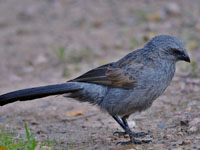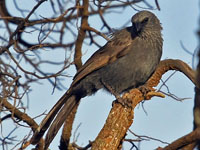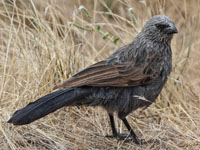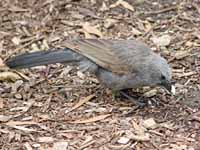The Mudnesters contain just two species: the apostlebird and the white-winged cough. Their closest relatives are the crows and their allies of family Corvidae.
By looking at the two species, it is not readily apparent they belong to the same family; however, their behaviors are very similar. Each species is very social, spending much of their time foraging through leaf litter, calling to one another almost constantly. And they both respond to a human presence in the same way - flying to a nearby tree, where they wait for the person to leave. In picnic grounds and parks these birds become accustomed to humans and tend to ignore their presence.
The apostlebird and the white-winged cough are endemic to Australia and they build their nests out of mud, hence their name "mudnesters". Nests are built opportunistically when rain causes muddy puddles. Their bowl shaped nests take several days to construct, longer if supplies of mud dry up before the nest is finished. Around three to five oval eggs are laid. They are incubated for around twenty days by all members of the group, and feeding and brooding duties are also shared within the group. The parents and helpers take care of the fledglings for up to 200 days, an extrodinary lenth of time in the avian world.
Genus Corcorax - 1 species
Chough,_White-winged Corcorax melanorhamphos
Description: The white-winged chough has black plumage, red eyes, and a thin down-curved bill. In flight, there is obvious white on the wings, thus the name. At 45 cm in length, it is a large bird, almost as large as a raven. The breeding pair, usually with many helpers, makes their large mud nest on a tree branch or fork of the tree. The juveniles spend several years as helps before becoming breeders.
The white-winged chough resembles in shape the alpine chough,_but this is due to convergent evolution.
Range: Southern and eastern Australia.
Habitat: Open forests, especially eucalypt woodlands.
Diet: Worms, insects, grain, snails. They forage while walking several kilimeters ever day. .
Conservation status: Least Concern.
Image by: 1) David Cook 2) David_Jenkins 3) Patrick K59 4) Dominic_SheronyRange: Southern and eastern Australia.
Habitat: Open forests, especially eucalypt woodlands.
Diet: Worms, insects, grain, snails. They forage while walking several kilimeters ever day. .
Conservation status: Least Concern.
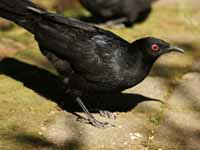
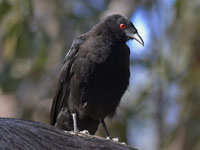

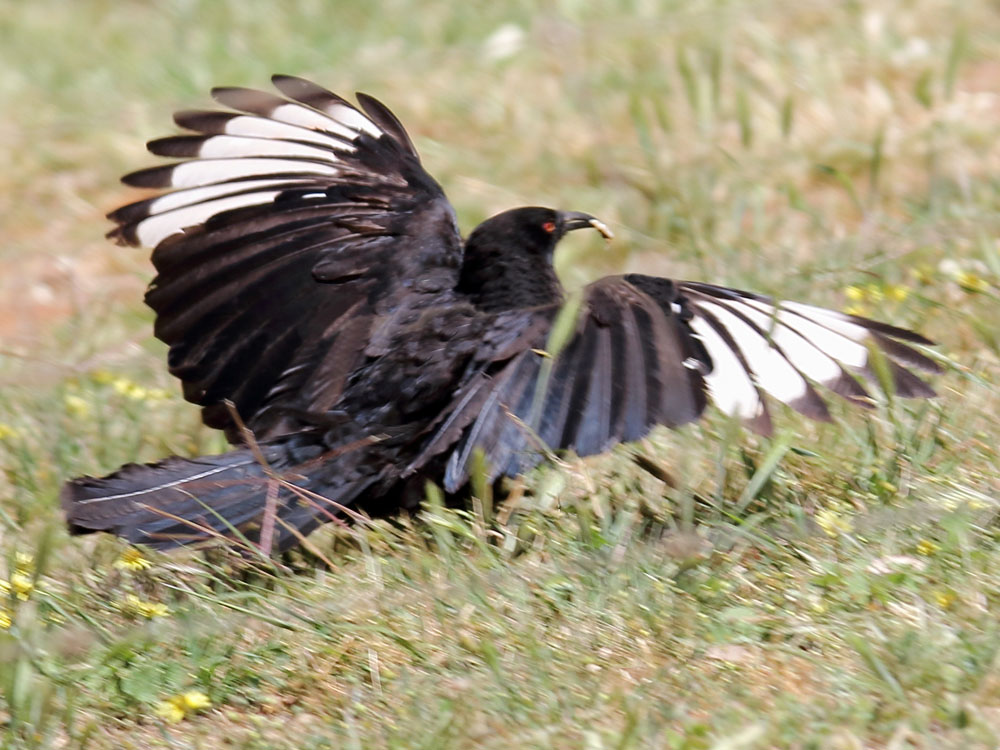
Genus Struthidea - 1 species
Apostlebird Struthidea cinerea
Description: The Apolstlebird has predominantly gray plumage. a long black tail, and brownish wings. The legs and bill are black. The bill is similar to a finch bill. Helps participate in making the mud nest, incubation, and feeding the chick. Its name relates to the tendency to travel in flocks of about 12 birds. It is 29 to 33 cm in length and about 130 grams.
Range: Australia.
Habitat: Dry woodlands, scrublands with some trees for placing their nest.
Diet: Mainly seeds and insects. Also eggs, small mammels..
Conservation status: Least Concern.
Image by: 1) Laurie_Boyle 2)
David Cook - Dubbo, NSW,
Australia 3) Arthur_Chapman 4) Charlie Westerinen - AustraliaRange: Australia.
Habitat: Dry woodlands, scrublands with some trees for placing their nest.
Diet: Mainly seeds and insects. Also eggs, small mammels..
Conservation status: Least Concern.
